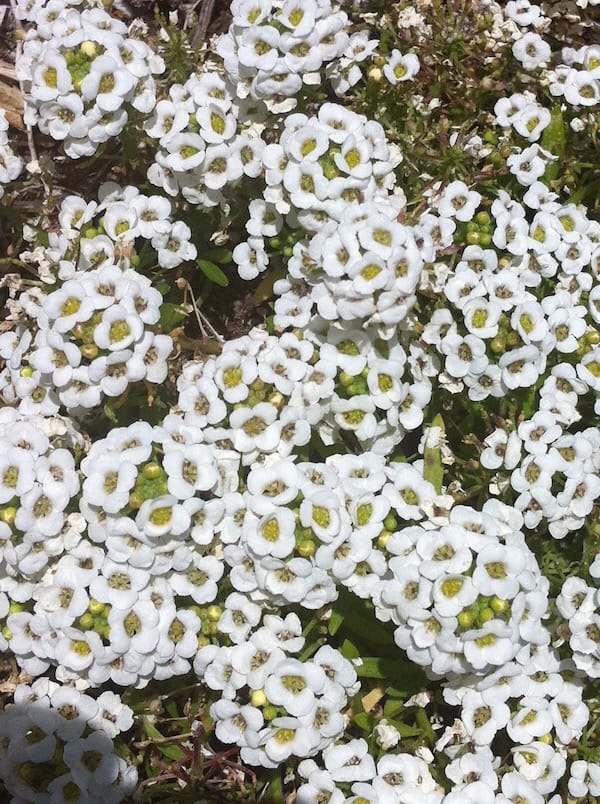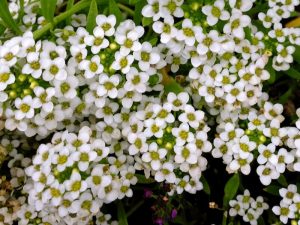Discover the Delightful Beauty of Lobularia maritima: Sweet Alyssum
Unveiling the captivating charm of Lobularia maritima, commonly known as Sweet Alyssum or Sweet Allison. This annual ground cover, belonging to the Brassicaceae family, graces gardens with its dainty white flowers. Join us as we explore the background, characteristics, cultivation, and propagation of this enchanting plant that adds a touch of elegance to borders, rock gardens, and containers.
Background and Family: Lobularia maritima, also referred to as Alyssum maritimum, Sweet Alyssum, or Sweet Allison, is a delightful member of the Brassicaceae family. This plant is native to Southern France and Macaronesia, where it flourishes in its natural habitat. Over time, it has captured the hearts of gardeners around the world, thanks to its charming appearance and sweet fragrance.
Characteristics and Description: Sweet Alyssum forms a round mound of delicate flowers, creating a visual spectacle in any garden setting. Growing up to 30cm or 1ft tall, it boasts branched stems adorned with alternately arranged oval leaves. The small flowers, available in shades of white, pink, yellow, or purple, emit a fragrant aroma reminiscent of sweet honey. With their four round petals, six stamens, and yellow anthers, these flowers attract a variety of pollinators, including insects. Alyssum blooms profusely, adding a burst of color and fragrance to the landscape. After flowering, elongated seedpods develop, and the seeds are dispersed by the wind.
Flowering Season and Fragrance: Sweet Alyssum blooms during the appropriate growing season, captivating onlookers with its abundance of blossoms. The fragrant scent of honey permeates the air, adding a delightful touch to the garden experience. The sweet fragrance beckons pollinators and brings a sense of joy and serenity to outdoor spaces.
Cultivation of Sweet Alyssum:
Sunlight Requirements: Sweet Alyssum thrives in sunny locations, making it an ideal choice for areas that receive ample sunlight throughout the day. Provide this plant with at least six hours of direct sunlight to promote healthy growth and abundant flowering.
Watering and Soil: Sweet Alyssum prefers moist but well-drained soil. Ensure that the soil retains adequate moisture without becoming waterlogged. Regular watering is essential, especially during dry periods, to sustain healthy growth and flowering. Allysum demonstrates adaptability to various soil types, making it a versatile addition to any garden.
Pests and Diseases: Sweet Alyssum is relatively resistant to pests and diseases. However, like any plant, it may encounter occasional issues. Keep an eye out for common garden pests such as aphids or snails, and take appropriate measures for control if necessary. Overall, Allysum demonstrates good resistance to pests and diseases.
Propagation: Propagation of Sweet Alyssum is a straightforward process, primarily accomplished through seed propagation. Collect seeds from mature plants and sow them directly into well-prepared soil. Maintain consistent moisture until the seedlings establish themselves. Alternatively, purchase quality seeds from reputable sources to ensure successful germination and growth.
Conclusion: Lobularia maritima, or Sweet Alyssum, adds a touch of elegance and fragrance to gardens and landscapes. With its profusion of delicate white flowers and delightful honey-like aroma, this annual ground cover is a true delight for the senses. Whether adorning borders, rock gardens, or containers, Sweet Allysum is a versatile and easy-to-grow plant. Embrace the beauty of Sweet Allysum and let it grace your garden with its captivating presence and enchanting fragrance.



